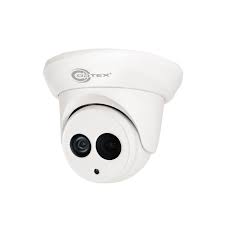Ahd Cameras: Unraveling Modern Surveillance Technology
Introduction
In a world where security is becoming increasingly important, surveillance technology is consistently evolving to address emerging needs. One of the recent advancements in the field is AHD (Analog High Definition) cameras. With a unique blend of efficiency, affordability, and high resolution, AHD cameras stand out in the crowd of surveillance technologies. In this article, we explore the core of AHD cameras, their workings, and how they compare to other surveillance systems.
What is an AHD Camera?
Existing in the overlap of efficiency, affordability, and high-quality resolution - AHD cameras are truly a class apart in the world of surveillance technologies. Here's an in-depth understanding of what an AHD camera is and what it brings to the table:
1. Definition: AHD or Analog High Definition camera is a surveillance device that captures super sharp high definition images, transmitting them via a standard coax cable.
2. Installation and Maintenance: These cameras stand out in their simplicity of installation and subsequent maintenance. Forget complicated setups that are usually a prerequisite for IP cameras. With AHD cameras, it's as straightforward as it gets!
3. Compatibility: One of this camera's standout features is its backward compatibility with existing analog systems. This allows a smooth and cost-effective transition to a higher-quality surveillance system.
4. The AHD Advantage: AHD Cameras paired their user-friendly attributes with power-packed performance. Capturing and providing clear, high-resolution images that effectively meets surveillance needs.
To sum it up, AHD cameras provide the simplicity of traditional analog cameras, combined with the HD image quality of IP cameras. They deliver enhanced security surveillance results, given their easy installation and maintenance, all while being a highly cost-effective solution.
How did Surveillance Technologies Evolve to AHD Cameras?
The evolution of surveillance technology from traditional Closed-Circuit Television (CCTV) to more potent Analog High Definition (AHD) cameras has been marked by a nuanced progression over the years. Here, we take a closer look at significant milestones in this journey:
1. CCTV cameras: Introduced in the mid-20th century, CCTVs transmitted analog signals to a predefined set of monitors resulting in low-resolution, often blurry video outputs.
2. Digital Video Recorders (DVRs): Introduced in the late 1990s, DVRs represented a significant leap in surveillance technology. DVR systems digitized analog footages and stored them on disk drives, enhancing picture quality and enabling long duration recording.
3. Internet Protocol (IP) cameras: An IP camera is a type of digital video camera typically used for surveillance, offering improved footage quality compared to traditional analog systems. However, installation and maintenance of IP cameras were costly and required advanced know-how due to their reliance on complex network configurations.
4. Analog High Definition (AHD) cameras: Launched in 2010, AHD cameras combined the best characteristics of prior technologies. They took the simplicity and reliability of analog cameras and coupled it with IP camera's high-definition capability—presenting a more affordable, hassle-free solution in high-resolution surveillance systems.
The timeline of surveillance technology reflects a continuous effort to enhance image integrity while making systems more affordable and easier to use. AHD cameras embody the successful culmination of these efforts, providing users with an optimal balance between high-quality imagery, easy installation, and affordable pricing.
How Does an AHD Camera Operate?
The operation mechanism of an AHD (Analog High Definition) camera, a type of surveillance device, is remarkably straightforward. Here are the key steps involved:
1. Signal Transmission: Using coaxial cables, AHD cameras transmit high-resolution footage to Digital Video Recorders (DVRs) for secure storage and future viewing.
2. Signal Conversion: Unlike legacy CCTV cameras, which convert the footage directly into a composite video signal, AHD cameras incorporate an additional step in the conversion process. They initially convert analog signals into digital signals at the camera level. This conversion helps preserve the quality of images, reducing possible degradation caused by extended transmission distances.
3. Record Details: The AHD camera system has the added advantage of recording both video and audio data. This capability enhances the detail level and extensive understanding of the monitored situation.
4. Backward Compatibility: This feature is a prime asset of AHD cameras, allowing them to easily integrate into existing analog systems. So, when you decide to upgrade from an older analog surveillance system, the transition becomes quite seamless.
Key Facts About AHD Cameras:
- Capacity: AHD cameras can transmit over extended distances (up to 500 meters) without significant degradation of image quality.

- Compatibility: Operate with existing coaxial cable systems, making them a cost-effective upgrade.
- Image Quality: AHD cameras typically offer far superior image resolution compared to traditional CCTV cameras.
- Cost: AHD cameras are a budget-friendly choice when compared to IP cameras, without compromising much on the image quality.

The simplicity and effectiveness of AHD cameras set them apart, making them an excellent option for your surveillance needs.
What Factors Should Be Considered When Choosing An AHD Camera?
Selecting an AHD camera for your security needs is a nuanced process that requires careful consideration of several factors. We've categorized these into four essential elements to ensure you make an informed decision:
1. Image Resolution: One of the primary advantages of AHD cameras is their superior image resolution. They are offered in 720p, 1080p, and 4MP variants. Assess your specific resolution needs, considering the criticality of the coverage area. A higher resolution camera might be necessary for monitoring sensitive spots.
2. Camera Placement: The design and format of the camera are crucial factors determined by the location it will be installed in. Sabotage-resistant dome cameras are well-suited for indoor use, while the more robust bullet cameras are optimal for the outdoors, withstanding adverse weather conditions.
3. Lighting Conditions: The lighting condition of the area your camera will be surveilling is crucial. For low-light or night-time conditions, consider an infrared AHD camera that offers enhanced night vision.
4. Backward Compatibility: For those looking to upgrade their existing surveillance system, it’s imperative that the new AHD camera is compatible with the previous analog installations. This compatibility allows you to reap the benefits of advanced technology without incurring excessive costs.
5. Warranty and Support: Lastly, always ensure the camera comes with dependable customer support and a robust warranty. This assurance will safeguard your investment and provide peace of mind.
In conclusion, equip yourself with these key considerations when choosing an AHD camera and ensure your selected model aligns with your security requirements and budget.
AHD vs. Other Surveillance Systems: What's the Edge?
When it comes to the world of surveillance systems, it's essential to understand how AHD cameras outstrip other available options. Let's break down the advantages for an in-depth perspective.
Image Quality
- AHD Cameras: Offer crisp high-definition footage.
- CCTV: The image quality is commonly grainy and of low resolution.
- IP Cameras: Provide high-definition pictures, albeit at a steeper price.
Setup Complexity
- AHD Cameras: Have straightforward installation and maintenance.
- CCTV: With simple setup, these cameras do not require complex network configurations.
- IP Cameras: Require intricate network configurations during setup, adding to installation complications.
Cost
- AHD Cameras: High quality at a considerably lower cost.
- CCTV: Cheaper initially but lower image quality may necessitate an upgrade.
- IP Cameras: Provide top-tier quality but at an equally high price.
Compatibility
- AHD Cameras: A significant plus is their compatibility with existing analog infrastructure.
- CCTV: Limited compatibility with older systems.
- IP Cameras: Typically requires a complete overhaul of the existing setup.
In conclusion, AHD cameras hold a distinct position in surveillance technologies. With a high-definition image output level comparable to IP cameras yet requiring installation as straightforward as CCTV cameras, they present a balanced choice. Add in their affordability and compatibility with existing systems, it becomes clear why AHD cameras have gained considerable traction in the surveillance market. With these factors, the AHD solution appears to offer an excellent blend of quality, simplicity, and economy.
Conclusion
The ability to capture high definition footage coupled with easy installation and affordability makes AHD cameras a compelling choice for modern surveillance needs. Whether you are upgrading from an existing analog system or setting up a new surveillance system, AHD cameras are sure to meet and exceed your expectations.
Related FAQs about what is an ahd camera
How does an AHD camera compare to a traditional analog camera?
An AHD (Analog High Definition) camera is miles ahead of a traditional analog camera. Delivering high definition, crisp images, the AHD camera overcomes the resolution limitations of analogue cameras. Moreover, AHD cameras are compatible with existing analog setups and are relatively easier and more cost-effective to install and maintain.
What are the advantages of using AHD cameras for surveillance?
AHD cameras offer various advantages for surveillance. Firstly, they capture high-resolution images, providing detailed surveillance footage. Secondly, their easy installation process and compatibility with existing analog systems make them an appealing choice for updates. Lastly, despite their high image quality, AHD cameras are more affordable compared to many other high-definition surveillance solutions.
How difficult is it to install and use an AHD camera?
Compared to other surveillance systems like IP cameras, the installation and usage of an AHD camera are relatively straightforward. They work with existing coaxial cable systems, mitigating the need for complex network configurations. Maintenance is also quite simple, making AHD cameras an optimal choice for easy and effective surveillance.


